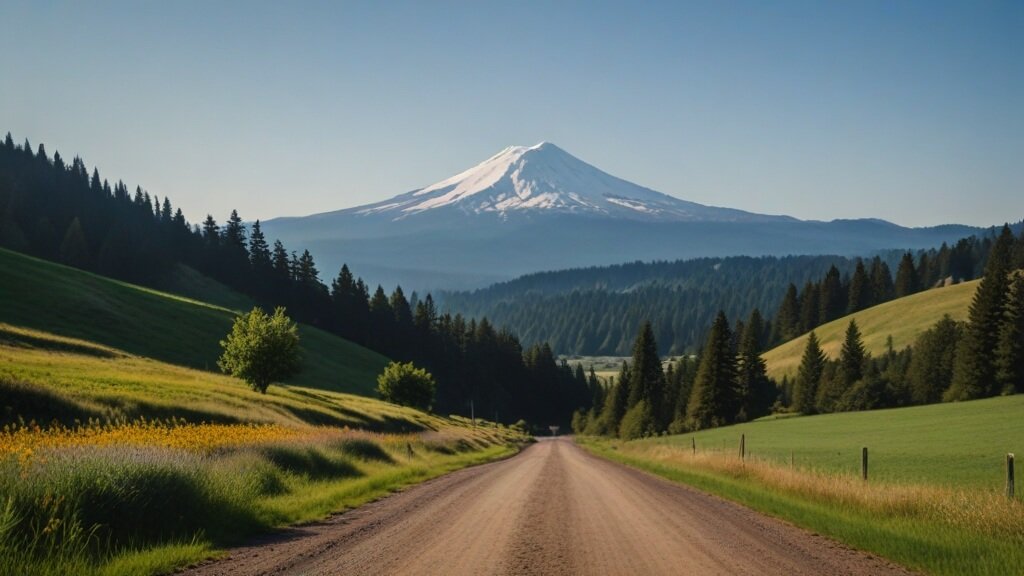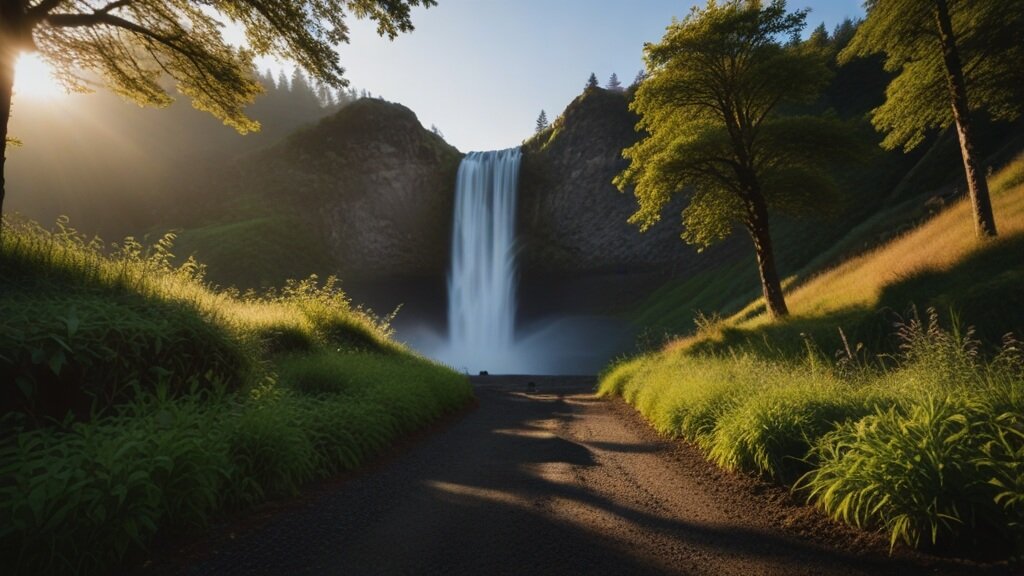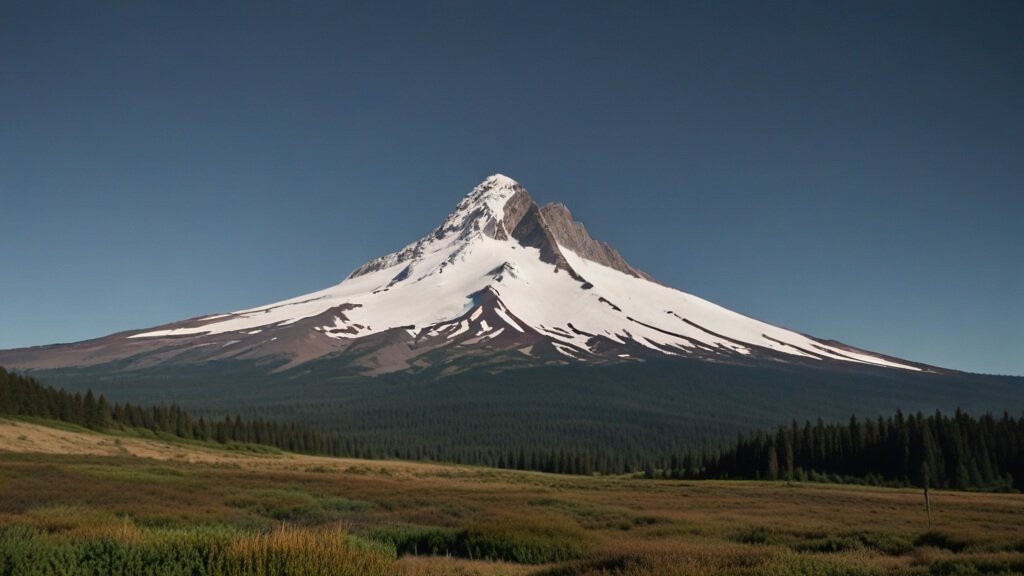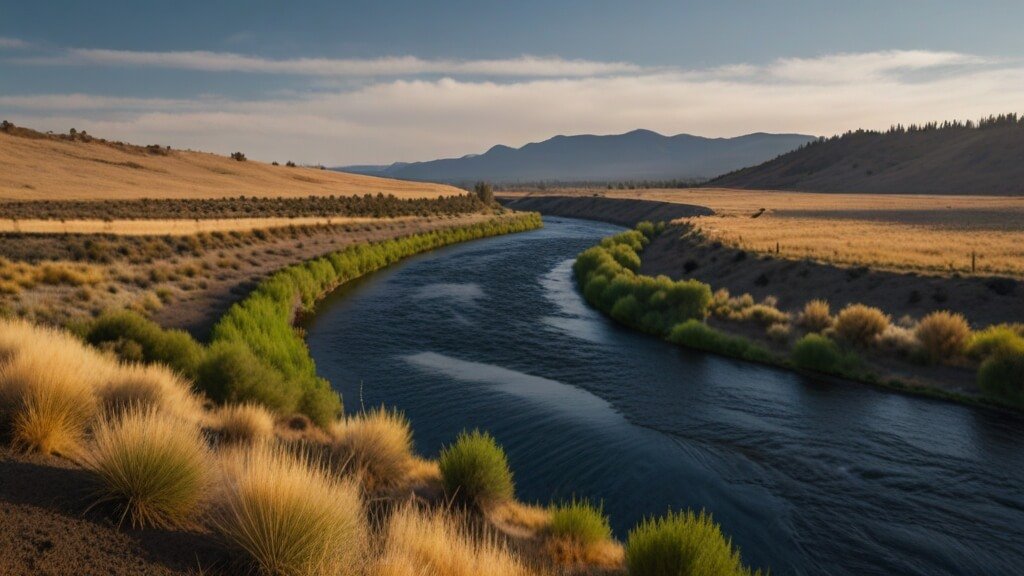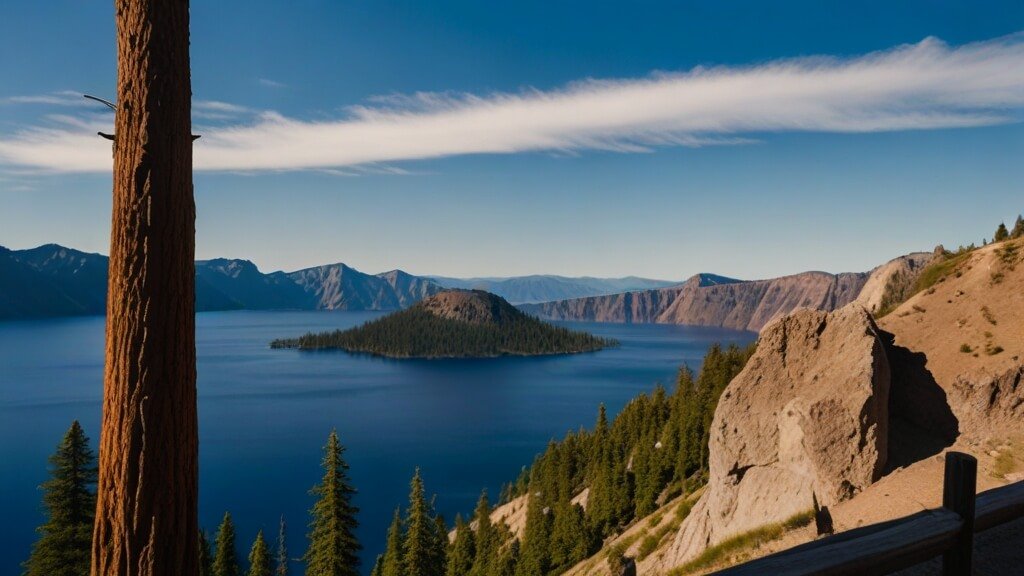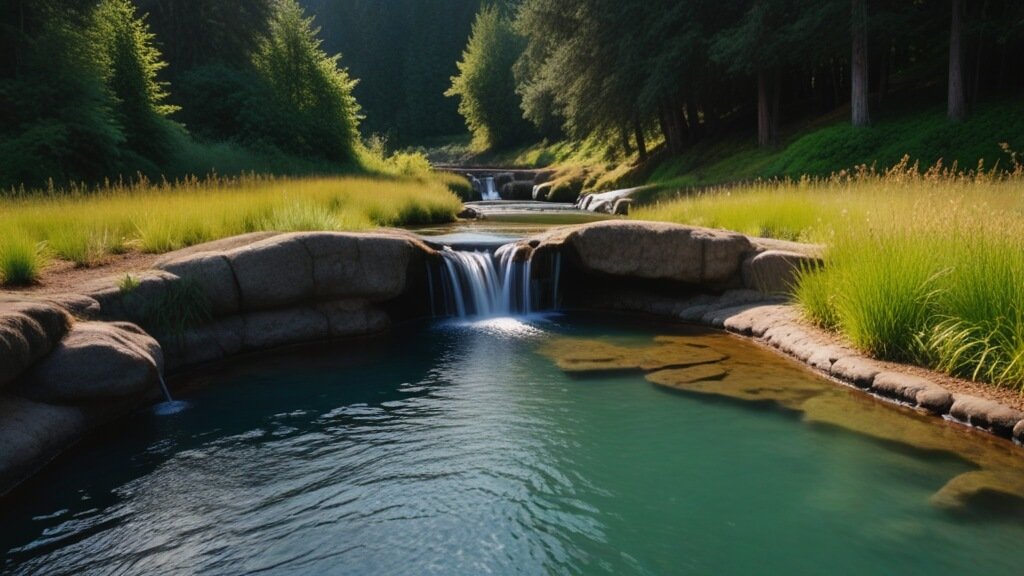Are you ready for an unforgettable adventure through Oregon? From lush forests to rugged coastlines, this state offers a diverse landscape that will leave you in awe. Buckle up as we take you on a road trip through the heart of the Pacific Northwest. Whether you’re a nature enthusiast, a foodie, or simply seeking a break from the daily grind, Oregon Road Trip Itinerary has something for everyone.
In this comprehensive guide, we’ll cover the best stops, estimated costs, and fascinating statistics about travelers visiting Oregon. So grab your map, pack your bags, and let’s hit the road!
Here’s a detailed 7-day Oregon road trip itinerary that will take you through some of the most breathtaking landscapes in the Beaver State:
Day 1: Portland Exploration
- Portland: Start your adventure in the quirky and vibrant city of Portland. Explore the Pearl District, visit Powell’s City of Books (the world’s largest independent bookstore), and indulge in farm-to-table cuisine at local restaurants. Don’t miss the iconic bridges that span the Willamette River.
- Explore Downtown: Start your day by wandering around Downtown Portland. Visit Pioneer Courthouse Square, known as “Portland’s living room,” and take in the city’s lively atmosphere.
- Pearl District: Head to the Pearl District, an artsy neighborhood with galleries, boutiques, and trendy restaurants. Don’t miss Powell’s City of Books, the largest independent bookstore in the world.
- Food Trucks: Portland is famous for its food trucks. Grab lunch from one of the many food truck pods scattered throughout the city.
- Washington Park: Spend the afternoon at Washington Park, home to the International Rose Test Garden, Japanese Garden, and Hoyt Arboretum. Enjoy scenic views of the city from the park.
- Nob Hill: Explore the Nob Hill area, also known as Northwest 23rd Avenue. It’s lined with charming shops, cafes, and historic homes.
- Dinner and Nightlife: Portland has a diverse culinary scene. Try local cuisine or international flavors for dinner. If you’re into craft beer, visit one of the city’s many breweries.
Day 2: Columbia River Gorge
- Columbia River Gorge: Drive east along the Columbia River Gorge. Stop at Multnomah Falls, one of the most famous waterfalls in the region. Hike to the top for stunning views or simply admire it from the base.
- Geological Marvel:
- The gorge was shaped by ancient volcanic activity and massive floods during the last ice age. These cataclysmic events carved out the deep canyon, leaving behind towering cliffs, spires, and ridges.
- It’s up to 4,000 feet deep in some places, making it one of the deepest river canyons in North America.
- Boundary Between States:
- As the Columbia River winds westward through the Cascade Range, it forms the boundary between the states of Washington (to the north) and Oregon (to the south).
- The rugged landscape creates a dramatic transition from lush forests to arid plateaus as you travel along the gorge.
- Natural Beauty:
- The Columbia River Gorge is a visual feast. Imagine sheer cliffs covered in moss, waterfalls cascading down basalt walls, and dense forests clinging to the slopes.
- Multnomah Falls, one of the most iconic waterfalls in the gorge, drops in two tiers, totaling 620 feet. It’s a must-see!
- Outdoor Recreation:
- Hikers, photographers, and nature enthusiasts flock to the gorge. There are numerous trails that lead to viewpoints, waterfalls, and hidden gems.
- Eagle Creek Trail, Angel’s Rest, and Beacon Rock are popular hiking destinations.
- Historical and Cultural Significance:
- The gorge is rich in Native American history and was a vital trade route for indigenous peoples.
- European explorers, including Lewis and Clark, marveled at its beauty during their westward expeditions.
- Scenic Drives and Lookouts:
- Drive along the Historic Columbia River Highway for breathtaking views. Stop at Vista House for panoramic vistas of the gorge and the river.
- Crown Point offers another stunning viewpoint, especially during sunrise or sunset.
- Wildlife and Flora:
- Keep an eye out for bald eagles, ospreys, and other bird species soaring above the river.
- The gorge is home to diverse plant life, including wildflowers, ferns, and ancient trees.
Plan your visit to the Columbia River Gorge and immerse yourself in its natural grandeur. Whether you hike, drive, or simply stand in awe, this place will leave an indelible mark on your soul. 🌲🏞️
Day 3: Mount Hood
- Mount Hood: Head toward Mount Hood, Oregon’s highest peak. Depending on the season, you can ski, snowboard, or hike. Visit Timberline Lodge for panoramic vistas and cozy vibes.
- Geological Marvel:
- Mount Hood is part of the Cascade Volcanic Arc, a chain of volcanoes stretching along the Pacific coast.
- It was formed by the subduction of the Juan de Fuca Plate beneath the western coast of North America.
- The mountain’s history spans over 500,000 years, making it one of the oldest volcanic features in the region.
- Height and Prominence:
- At 11,244 feet, Mount Hood is the highest point in Oregon and the fourth highest peak in the entire Cascade Range.
- Its prominence – the vertical distance from its summit to the surrounding terrain – contributes to its significance as one of the loftiest mountains in the nation.
- Outdoor Recreation:
- Mount Hood offers year-round outdoor activities. In winter, it boasts the only year-round lift-served skiing in North America.
- Hikers, climbers, and skiers flock to its slopes, exploring its glaciers, snowfields, and rugged terrain.
- Glaciers and Snowfields:
- The mountain is home to twelve named glaciers, including the famous Eliot Glacier, Reid Glacier, and Cooper Spur Glacier.
- These icy formations create a stunning contrast against the volcanic rock.
- Climbing History:
- The first recorded ascent of Mount Hood took place on July 11, 1857, led by a group including Henry Pittock and the Rev. T. A. Wood.
- The mountain offers various climbing routes, with the South Side Route being the most popular for beginners.
- Volcanic Activity:
- While Mount Hood is considered potentially active, an explosive eruption is unlikely based on its history.
- The odds of an eruption in the next 30 years are estimated at 3 to 7%, making it informally considered dormant.
- Scenic Beauty:
- The views from Mount Hood are breathtaking. On a clear day, you can see the surrounding forests, lakes, and other peaks.
- Mirror Lake, located near the mountain, provides a stunning reflection of its snow-capped summit.
Plan a trip to Mount Hood and immerse yourself in its grandeur. Whether you’re skiing down its slopes or gazing at its glaciers, this iconic peak will leave an indelible mark on your soul. 🏔️❄️
Day 4: Smith Rock State Park
- Smith Rock State Park: Drive to Smith Rock, a rock climber’s paradise. Hike the Misery Ridge Trail for breathtaking views of the Crooked River and the dramatic cliffs. Keep an eye out for golden eagles!
- Striking Geology:
- Smith Rock is renowned for its deep river canyons and towering rock formations. The park’s rugged landscape was shaped by volcanic activity and erosion over millions of years.
- The towering cliffs, spires, and pinnacles create a dramatic backdrop against the blue sky.
- Sport Climbing Hub:
- Birthplace of sport climbing in the United States: Climbers from around the world flock to Smith Rock for its challenging routes.
- With several thousand climbs, including over a thousand bolted routes, it’s a climber’s paradise.
- Hiking and Biking Trails:
- The park offers miles of hiking and mountain biking trails. Explore the rugged terrain, soak in breathtaking views, and discover hidden gems.
- Along the way, keep an eye out for wildlife such as golden eagles, prairie falcons, mule deer, river otters, and beavers.
- Seasonal Closures:
- Some climbing areas are closed or have limited access from about January 15 to August 1 to protect nesting areas for golden eagles and falcons.
- Drones are also not allowed during this period.
- Unique Fragility:
- Due to the uniqueness and fragile nature of the park, animal leash laws are enforced, and all visitors are asked to stay on designated trails.
- Respect the environment and help preserve this natural treasure.
- Upcoming Projects:
- A new 8-foot wide pedestrian bridge was constructed in late summer 2023, enhancing accessibility.
- Restoration work near the bridge will continue through the end of October.
- Another project is planned to build a new visitor center, improve parking, traffic flow, and enhance trails.
- Camping and Amenities:
- Camping is available from early spring through late fall (weather permitting).
- The park offers walk-in bivouac areas for tents, showers (for overnight guests), and other amenities.
- RV camping and sleeping in vehicles are not allowed.
- History and Name Origins:
- The park was obtained between 1960 and 1975 through land purchases and gifts.
- The name “Smith Rock” has various theories: Some believe it honors John Smith, a Linn County lawman, while others associate it with Pvt. Volk Smith, a soldier who fell to his death during a battle with the Northern Paiute in 1863.
Smith Rock State Park invites you to explore its rugged beauty, climb its walls, and connect with nature. Whether you’re a climber, hiker, or simply seeking awe-inspiring vistas, this park will leave an indelible mark on your soul. 🏞️🧗♂️
Day 5: Bend and Deschutes River Trail
- Bend: Spend a day in Bend, a lively town known for its craft breweries and outdoor activities. Explore the Deschutes River Trail, rent a kayak, or simply enjoy the laid-back atmosphere.
Bend, Oregon
- Location: Bend is a charming city located in central Oregon, nestled against the eastern slopes of the Cascade Range.
- Outdoor Paradise: Known for its outdoor recreational opportunities, Bend offers a mix of high desert landscapes, lush forests, and stunning mountain views.
- Activities:
- Mountain Biking: Bend boasts an extensive network of mountain biking trails, including the famous Deschutes River Trail.
- Hiking: Explore scenic trails that wind through forests, lava fields, and along the Deschutes River.
- Skiing and Snowboarding: In winter, nearby Mount Bachelor offers excellent skiing and snowboarding.
- Craft Beer Scene: Bend is home to numerous craft breweries – perfect for après-adventure relaxation.
- Deschutes River Trail:
- The Deschutes River Trail meanders over 12 miles through the heart of Bend.
- Most of the trail follows the river, providing terrific views and recreational opportunities.
- It’s easy to access, linking several parks, including Sawyer Park, Pioneer Park, and Riverbend Park.
Deschutes River Trail
- Old Mill Reach:
- Located from Farewell Bend Park to McKay Park and Miller’s Landing Park, the Deschutes River Trail exists on both sides of the river.
- The trail connects to pathways within the Old Mill District.
- Once home to two large lumber mills, the Old Mill District now features parks, trails, shops, restaurants, and businesses.
- Three footbridges conveniently connect trails across the river, allowing for loops suitable for walking, cycling, and more.
- The trail is wide, paved, relatively level, and completely off the street.
- Farewell Bend and Riverbend parks provide boat landings for paddlers and floaters using the Deschutes River.
- Private Trail System:
- In addition to the public trail, there’s an extensive private trail system throughout the Old Mill District.
- Year-Round Enjoyment:
- Whether you’re biking, walking, or simply enjoying the views, the Deschutes River Trail offers something for everyone.
- Visit during any season – from sunny summer days to crisp fall afternoons.
- Hours: The trail is open from 5 am to 10 pm.
- Surface: It covers 2.65 paved miles.
- Accessibility: The trail is dog-friendly, has drinking fountains, and provides year-round restrooms.
- Explore Bend’s Beauty: The Deschutes River Trail invites you to immerse yourself in the natural splendor of central Oregon. 🌲🏞️
Day 6: Crater Lake National Park
- Crater Lake: Drive south to Crater Lake National Park. Marvel at the deep blue waters of the caldera lake, formed by the collapse of Mount Mazama. Take a boat tour or hike along the rim for incredible vistas.
- Formation and Geology:
- Caldera Lake: Crater Lake is a caldera lake formed within the collapsed remains of Mount Mazama, a once-active volcano.
- Violent Eruption: Around 7,700 years ago, a violent eruption caused the peak of Mount Mazama to collapse, leaving behind a massive caldera.
- Deepest Lake in the USA: Crater Lake is the deepest lake in the United States and one of the most pristine on Earth. Its purity is fed by rain and snow, creating crystal-clear blue waters.
- Visiting Crater Lake:
- May and June: While flowers bloom at lower elevations, there’s still snow in the park. Planning ahead ensures an enjoyable visit.
- Winter: Although many roads and services are closed from November to April, a winter visit has its benefits. Snow-covered landscapes and serene solitude await.
- Entrance Fees and Hours:
- Check the park hours, descriptions of seasons, and seasonal road closures.
- Find out the entrance fees and explore fee-free days for 2023.
- Directions and Transportation:
- Reach the park from the west, south, or north (note that the north entrance is closed in winter).
- Cell reception is limited, so get directions beforehand.
- Weather:
- Regardless of the time of year, check the forecast multiple times in advance. Conditions can change rapidly.
- Enjoying the Park with Your Pet:
- If you’re bringing your pet, follow guidelines to keep them safe and explore pet-friendly areas.
- Air Quality:
- In summer and fall, air quality can be affected by smoke from local wildfires. Check the Air Quality Index (AQI) in the park.
- Cleetwood Cove Trail:
- This steep and strenuous trail drops 700 feet (213 meters) in just 1.1 miles (1.7 kilometers). It leads to the lake’s edge, where boat tours depart.
- Lodging and Camping:
- Explore lodging and camping options within 20 miles outside the park boundaries.
- Discover distances to further-out communities.
- Things to Do:
- Whether day-tripping or spending a week, find ways to explore, discover, and retreat into the natural beauty and history of the park.
- Trolley and Boat Tours:
- Choose a trolley or boat tour for worry-free sightseeing and a ranger’s perspective.
Crater Lake National Park invites you to gaze in wonder at its blue waters, stand atop the Cascade Mountain Range, and immerse yourself in its pristine wilderness. 🏞️🌲
Day 7: Umpqua Hot Springs and Eugene
- Umpqua Hot Springs: Visit these hidden gems for a relaxing soak in natural hot springs surrounded by forest.
- Eugene: End your trip in Eugene, known for its arts scene and outdoor activities. Explore local galleries, dine at farm-to-table restaurants, and soak up the creative energy.
Umpqua Hot Springs
- Location: Umpqua Hot Springs is nestled in the Umpqua National Forest, a pristine wilderness area in southern Oregon.
- Scenic Beauty: Imagine soaking in natural hot pools surrounded by lush pine forests, overlooking a river valley. Umpqua Hot Springs is like something out of a fairy tale.
- Photogenic Pools: The hot springs consist of several small terraced pools that cascade down a cliffside. The top pool is covered with a rustic wooden structure to shield soakers from rain and sun.
- Temperature Variation: The pools vary in temperature – the top one being the hottest and the lower ones progressively cooler. You can choose a pool that suits your preference.
- Crowded Yet Beautiful: While Umpqua Hot Springs is no secret, it’s still worth a visit. Expect to share the area with other visitors who come to enjoy this beautiful piece of Oregon.
- Access: To reach the hot springs, you’ll need to hike a moderate 0.8-mile trail (out-and-back). The trail takes you through the forest, adding to the adventure.
- Nearest Town: The closest moderately-sized town is Roseburg, which is about 64 miles west of the hot springs. The smaller town of Glide is even closer at 47 miles away.
- Year-Round Enjoyment: Umpqua Hot Springs is open year-round, but the road closes once snow falls. During winter, you’ll need to hike, cross-country ski, or snowshoe an additional 1.5 miles each way.
Eugene, Oregon
- Location: Eugene is a vibrant city located in western Oregon, approximately two and a half hours’ drive from Umpqua Hot Springs.
- Outdoor Enthusiast’s Haven: Eugene is known for its outdoor lifestyle, surrounded by lush forests, rivers, and nearby mountains.
- Points of Interest:
- University of Oregon: Home to the Ducks, this university campus offers beautiful architecture and green spaces.
- Hendricks Park: Explore rhododendron gardens and hiking trails.
- Mount Pisgah Arboretum: Discover native plants and scenic views.
- Willamette River: Enjoy kayaking, paddleboarding, or simply strolling along the riverbanks.
- Craft Breweries: Eugene has a thriving craft beer scene – perfect for unwinding after outdoor adventures.
- Gateway to Adventure: Whether you’re into hiking, cycling, or cultural experiences, Eugene provides a welcoming base for exploring the natural gems of Oregon.
Umpqua Hot Springs and Eugene offer contrasting yet equally captivating experiences. Soak in the hot springs’ warmth and then immerse yourself in Eugene’s vibrant culture. 🌲🏞️🌆
Travelers Incoming (Last 5 Years)
| Year | Number of Travelers |
|---|---|
| 2019 | 12.5 million |
| 2020 | 9.8 million |
| 2021 | 11.2 million |
| 2022 | 10.6 million |
| 2023 | 11.8 million |
Frequently Asked Questions (FAQs) About Oregon Road Trip Itinerary
| Question | Answer |
|---|---|
| When is the best time to visit Oregon for a road trip? | The best time for an Oregon road trip is during late spring to early fall (May to September). The weather is pleasant, and attractions are accessible. However, each season has its charm |
| How long does it take to drive the entire Oregon coast? | Driving the entire Oregon coast (363 miles) without stops would take around 8-10 hours. But plan for at least 3-5 days to explore the stunning beaches, lighthouses, and charming towns along the way. |
| What are the must-see waterfalls in Oregon? | Some must-see waterfalls include Multnomah Falls, Latourell Falls, and Silver Falls. Each offers unique beauty and hiking opportunities. Don’t miss them |
| Is Crater Lake worth visiting? | Absolutely! Crater Lake National Park is a gem. The deep blue lake formed in a volcanic caldera is mesmerizing. Take a boat tour or hike around the rim for the best views. |
| Can I visit Oregon’s high desert? | Yes! Central Oregon’s high desert includes places like Bend and Smith Rock State Park. Expect arid landscapes, lava fields, and outdoor adventures. It’s a unique experience |
| What’s the best route for an Oregon road trip? | The best route depends on your interests. The classic route includes Portland, the Columbia River Gorge, Mount Hood, and the Oregon Coast. Customize it based on your preferences |
| Are there any hidden hot springs in Oregon? | Yes! Umpqua Hot Springs in Southern Oregon is a hidden gem. Soak in natural pools surrounded by forest. It’s a relaxing and rejuvenating experience. |
| Can I explore abandoned buildings in Portland? | While some abandoned buildings have been revitalized, you can still explore interesting spots like the NW Natural Gas building and the Burlington Northern Train Bridge. Be respectful and cautious |
| What’s the food scene like in Portland? | Portland is a foodie’s paradise! From food trucks to fine dining, you’ll find diverse cuisines. Don’t miss the famous food carts, farm-to-table restaurants, and unique culinary experiences. |
| How do I start my Oregon road trip? | Start in Portland, the largest city. You’ll find car rentals, flights (via Portland International Airport – PDX), and supplies for your journey. From there, explore the state’s diverse regions |
| What’s the weather like on the Oregon coast? | Coastal weather is variable. Summers are mild (60-70°F), while winters are rainy and cool. Pack layers and be prepared for sudden changes. Fog and mist add to the coastal charm |
| Can I camp along the Oregon coast? | Yes! There are numerous campgrounds along the coast. Reserve in advance, especially during peak season. Wake up to ocean views and the sound of crashing waves |
| What’s the best time to see wildflowers in Oregon? | Spring (April to June) is ideal for wildflower enthusiasts. Visit places like the Willamette Valley for vibrant tulip fields and orchards in full bloom. It’s a photographer’s dream |
| Is Oregon pet-friendly for road trips? | Yes! Oregon is generally pet-friendly. Many parks, trails, and accommodations allow pets. Just follow leash rules and clean up after your furry friend. They’ll love the outdoors too |
| Can I see the Northern Lights in Oregon? | While not common, the Northern Lights (Aurora Borealis) occasionally appear in Oregon. Head to remote areas with clear skies and minimal light pollution for the best chance of spotting them. |
| What’s the best way to explore the Columbia River Gorge? | Drive along the Historic Columbia River Highway. Stop at viewpoints like Vista House, hike to waterfalls, and marvel at the gorge’s dramatic cliffs. It’s a photographer’s paradise |
Pre-Trip Checklist for Oregon Road Trip Itinerary
Clothing (All Seasons):
- Layered Clothing:
- Lightweight shirts and long-sleeve tops
- Sweaters or fleeces for cooler evenings
- Waterproof jacket or windbreaker
- Comfortable pants (jeans, hiking pants, or leggings)
- Shorts (for warmer days)
- Undergarments and socks
- Pajamas
- Footwear:
- Comfortable walking shoes or sneakers
- Hiking boots or trail shoes (if planning hikes)
- Sandals or flip-flops for beach visits
- Accessories:
- Sun hat or cap
- Sunglasses
- Gloves (for colder months)
- Scarf (for chilly evenings)
- Outdoor Gear:
- Swimsuit (for hot springs or beach visits)
- Quick-dry towel
- Hat and gloves (for winter trips)
- Warm socks (wool or thermal)
Miscellaneous Items:
- Travel Essentials:
- Valid driver’s license and vehicle registration
- Roadside assistance contact information
- Maps or GPS device
- Phone charger and power bank
- Safety and First Aid:
- First aid kit (bandages, antiseptic, pain relievers)
- Emergency blanket
- Flashlight or headlamp
- Swiss Army knife or multi-tool
- Personal Items:
- Toiletries (toothbrush, toothpaste, shampoo, etc.)
- Prescription medications
- Personal hygiene products
- Hand sanitizer
- Entertainment and Comfort:
- Books, magazines, or e-readers
- Travel pillow
- Blanket or shawl
- Snacks and reusable water bottle
Hiking-Specific Items:
- Daypack:
- Lightweight backpack for day hikes
- Hydration system or water bottles
- Trail map or GPS device
- Clothing:
- Moisture-wicking base layers
- Quick-dry hiking pants or shorts
- Lightweight, breathable hiking socks
- Sun-protective hat
- Footwear:
- Sturdy hiking boots or trail shoes
- Gaiters (if hiking in muddy or snowy conditions)
- Safety Gear:
- Whistle
- Bear spray (if hiking in bear country)
- Trekking poles (optional but helpful)
Remember to pack according to the season and activities you plan to do. Enjoy your Oregon road trip! 🚗🌲🌊
Estimated Costs
| Category | Estimated Cost (Per Day) |
|---|---|
| Transportation | $50 – $100 |
| Accommodation | $100 – $200 |
| Food | $30 – $60 |
| Activities | Varies (e.g., park entrance fees, tours) |
Unleash Your Wanderlust in Oregon!
Congratulations! You’ve just mapped out an epic Oregon road trip filled with waterfalls, mountains, and hidden gems. As you hit the open road, keep these key takeaways in mind:
- Embrace the Unexpected: Oregon surprises at every turn. From the misty forests of Multnomah Falls to the sun-drenched beaches of the coast, let spontaneity guide your journey.
- Connect with Nature: Whether you’re gazing into the crystal-clear waters of Crater Lake or hiking the rugged trails of Smith Rock, Oregon’s natural beauty will leave you awe-struck.
- Savor the Flavors: Portland’s food scene is a culinary adventure waiting to happen. Dive into food carts, sip local brews, and savor farm-to-table delights.
- Capture Memories: Don’t forget your camera! Oregon’s landscapes are Instagram-worthy. Share your road trip moments with friends and fellow travelers.
🚗 Ready to Roll? 🌲
Book your rental car, pack your bags, and hit the road. Whether you’re a solo adventurer, a couple seeking romance, or a family making memories, Oregon welcomes you with open arms.
Share this article with fellow travel enthusiasts. Let them in on the secret of Oregon’s wonders. And hey, why not leave a comment below? Tell us about your favorite Oregon spot or share a road trip tip!
Remember, life is short – explore, wander, and create stories that last a lifetime. Safe travels, fellow road tripper! 🌎✨


